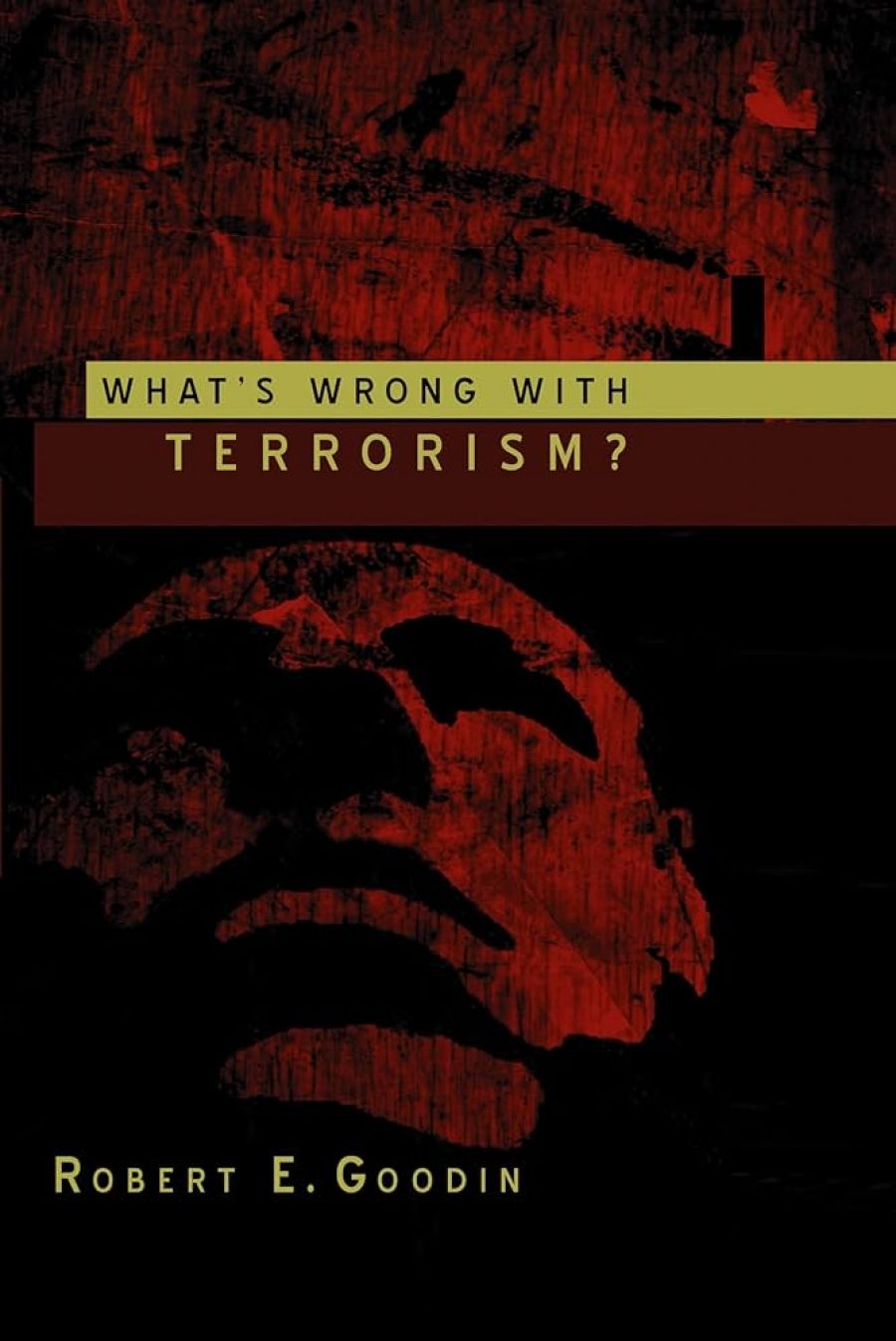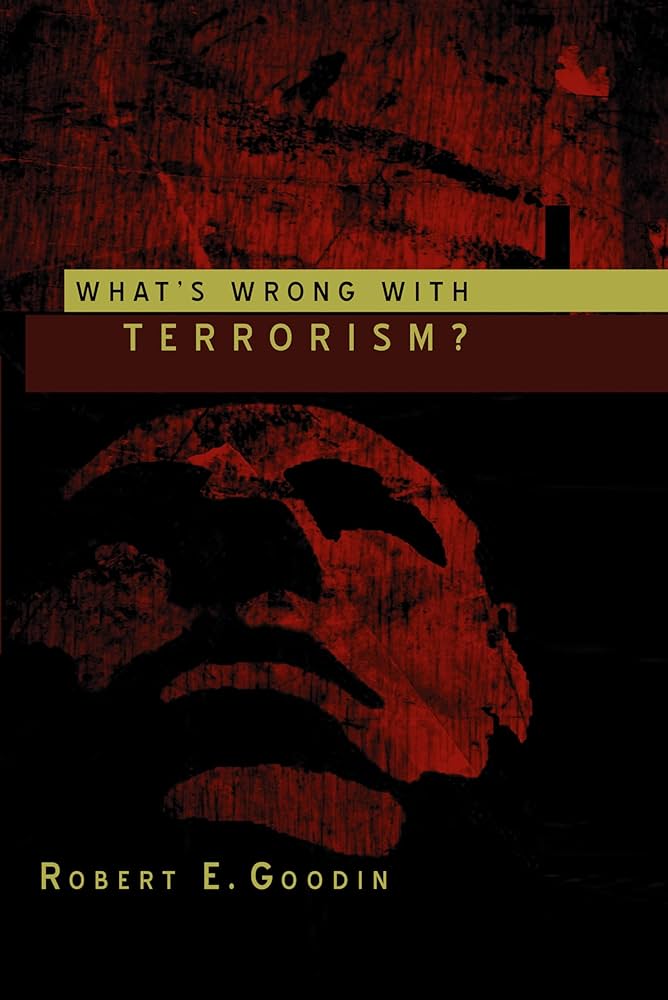
- Free Article: No
- Contents Category: Politics
- Custom Article Title: The trouble with terrorism
- Review Article: Yes
- Article Title: The trouble with terrorism
- Online Only: No
- Custom Highlight Text:
The fifth anniversary of the 9/11 attacks revived familiar lines of debate about the significance of terrorism. On one side are those who believe that 9/11 brought into stark relief a deadly new challenge to our values and existence, an enemy that must be faced resolutely and fought on every front. On the other are those who believe that 9/11 gave birth (or rebirth) not to a new form of threat but to a noxious form of politics: self-righteous, muscular and xenophobic. It is to this stand-off that Robert Goodin makes a refreshing and much-needed contribution. Goodin is a rare commodity: a political philosopher who remains resolutely focused on the problems and controversies that bedevil the real world of politics and policy. His most recent offering, What’s Wrong with Terrorism?, sets out to make a ‘moral assessment of the phenomenon of terrorism and reactions to it’, asking: ‘what is the distinctive wrong of terrorism? … what makes terrorists different from, and morally even worse than, ordinary murderers, kidnappers, and so on?’
- Book 1 Title: What's Wrong with Terrorism?
- Book 1 Biblio: Polity Press, $40.95 pb, 254 pp, 0745634974
- Book 1 Cover Small (400 x 600):

- Book 1 Cover (800 x 1200):

Goodin takes direct aim at the two most common ways of defining terrorism and its evils: those that focus on the victims of terrorist violence, and those that focus on terrorism’s perpetrators. He mounts a careful refutation of Just War Theory, which tends to use its own basic categorisation, the distinction between combatants and civilians, to characterise terrorism as a form of violence that targets innocent civilians. Goodin’s conclusion is that Just War Theory’s ‘intricate casuistry’ allows too much in the struggle between terrorists and the state to be justified and argued away.
The next target of Goodin’s analysis are academic and official definitions that categorise terrorism as an activity confined exclusively to non-state actors. Unfortunately, in making the entirely appropriate point that states can commit terrorism too, he overdraws the point. He labels the confining of terrorism to non-state actors a convenient fiction, whereby ‘politicians have entered into a mutual protection pact not to prosecute one another as terrorists’. But states have been only too willing to label each other terrorists. Had the United States invaded Libya rather than Iraq in 2003, it would almost certainly have charged Gaddafi with terrorism. Congress members, in drastically increasing oversight over intelligence agencies in the 1970s and 1980s, labelled the various violent activities of American intelligence officers ‘terrorism’.
Goodin argues that terrorism should be defined in terms of the intentions of its perpetrators: ‘Terrorism, strictly speaking, must therefore be defined in terms of “acting with the intention of instilling fear”.’ The ‘distinctive wrong of terrorism’, for Goodin, is that ‘[i]nstilling terror undermines people’s capacity for autonomous self-government’. By characterising terrorism in this way, he is able to argue that terrorism can be waged by both opposition groups and governments, and that a ‘terrorist’ need not also be a perpetrator of violence. This definition becomes crucial to a book that, surprisingly, spends far more time talking about what governments do than what violent, non-state actors do.
The central chapters explore the morality of playing on the public’s fears for political gains. Goodin takes pains to distinguish ‘warnings’ from ‘threats’, once again relying on the issuer’s intentions to differentiate the former (which are issued with the pure intent of averting harm) from the latter (which are issued with the intent of personal or political gain). He uses this definition to argue that politicians and officials that make political capital from warning the public about terrorism are just as guilty of ‘instilling terror for socio-political advantage’ as the suicide bombers themselves. He argues that George W. Bush, during the 2004 election campaign, was guilty of just such terrorism.
However, in making this point, Goodin’s careful analysis succumbs to several weaknesses. He seems unsure of how to define ‘socio-political advantage’, at one point arguing that ‘purely careerist politicians cannot count as “terrorists”’, but later arguing that a hypothetical mayor who issued a warning of a terrorist attack to increase her share of the vote was guilty of terrorism. This vagueness about what constitutes ‘socio-political’ also makes it difficult for him to distinguish terrorism from warfare or law enforcement. Noting that it is inherent in the nature of war to instil fear, he argues that ‘[i]nstilling fear in one’s opponents in order to gain some battlefield advantage is to pursue a military objective, not a political one’ – an oddly pre-Clausewitzian definition of politics and war.
Goodin also fails to define the connections and distinctions between the states of concern, worry, anxiety, fear and terror. Surely the prospect of a shadowy Islamist group undertaking random bombings with the intent of causing maximum casualties is a qualitatively different class of phenomenon, and evokes a very different emotional response and political effect, than the erroneous claims about Iraq’s weapons of mass destruction? It is in failing to carefully interrogate the public psychology of terrorism that the book’s major weakness lies. Strangely for such an accomplished political philosopher, Goodin dismisses the possible contribution of Thomas Hobbes, surely the greatest political psychologist of fear and human vulnerability, to the understanding of terrorism.
Nevertheless, What’s Wrong with Terrorism? remains an important contribution to our thinking about terrorism in a post-9/11 world. Even its weaknesses provoke reflection and discussion that promise to take us beyond the current sterile debates. Goodin has some germane policy advice: that central to the fight against terrorism must be a deflation of the hype surrounding the phenomenon, thereby depriving terrorists of the oxygen of publicity. This is the silent lesson of all successful campaigns against terrorism in the past, and a much-needed contribution to public and policy discussions.


Comments powered by CComment